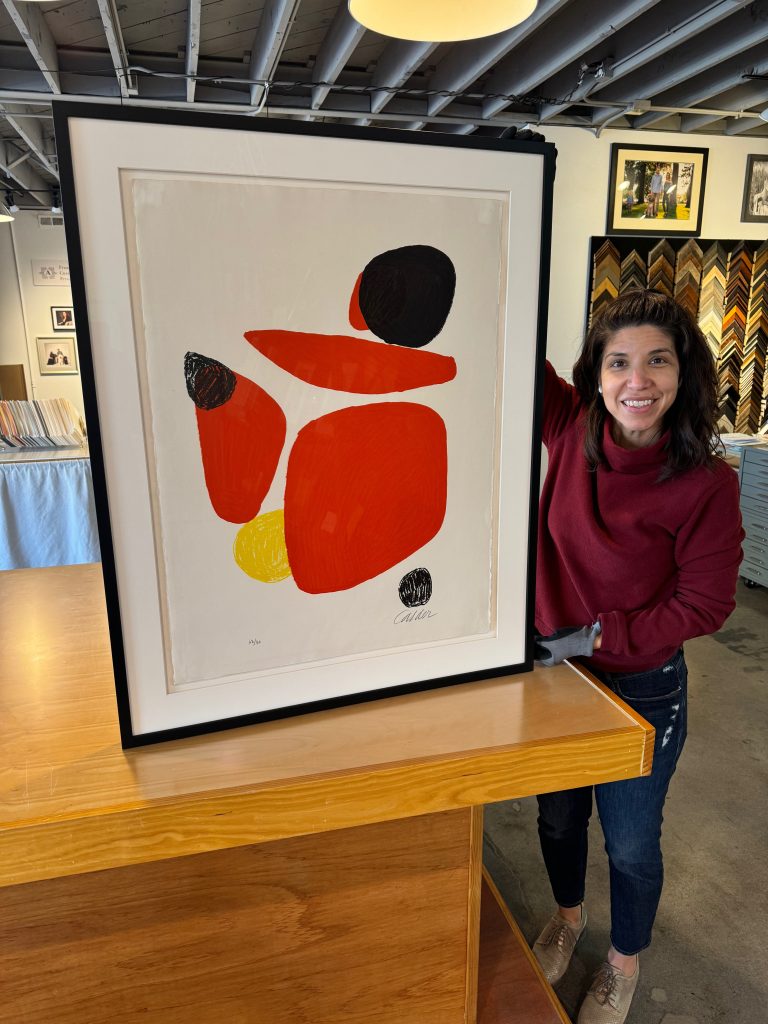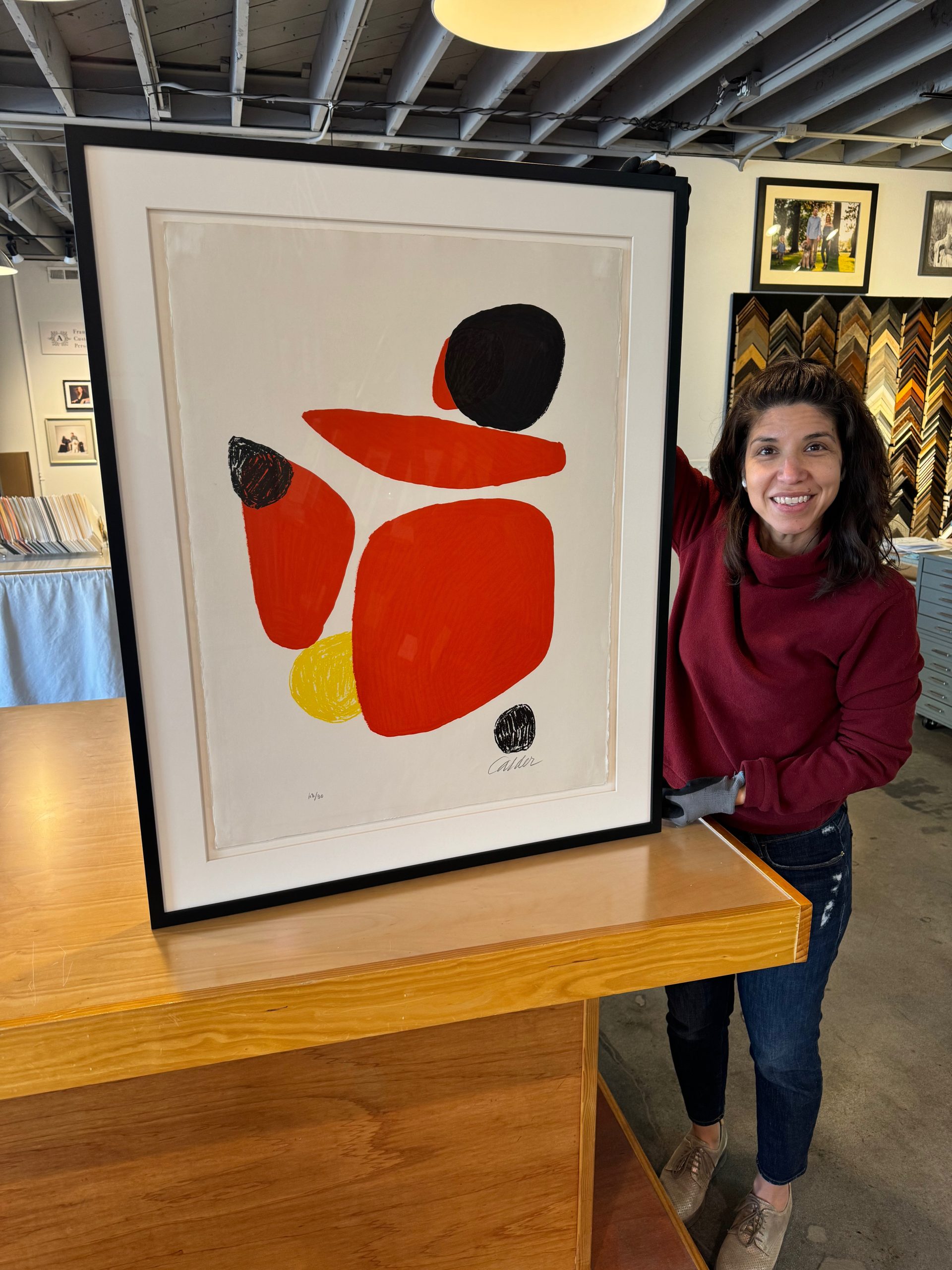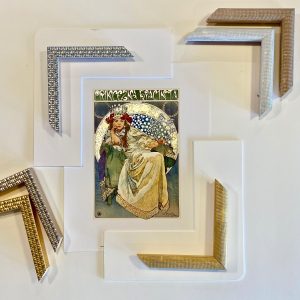Last year, we had the privilege of reframing an inherited Alexander Calder print for one of our clients. Alexander Calder, renowned for his invention of the mobile, infused his artworks with abstract forms, vibrant colors, and a sense of playful motion that captivated generations. Even in his 2-D art, like the lithograph our client brought to us, Calder’s whimsical spirit shone through.
The lithograph arrived in a classic gold frame, but our client desired a more contemporary and timeless presentation. Upon removing it from the gold frame, we discovered that it was tightly mounted to the mat board. Recognizing the need for expert care, we promptly enlisted the help of an art conservator to delicately remove old hinges and clean the piece, ensuring its preservation for years to come.
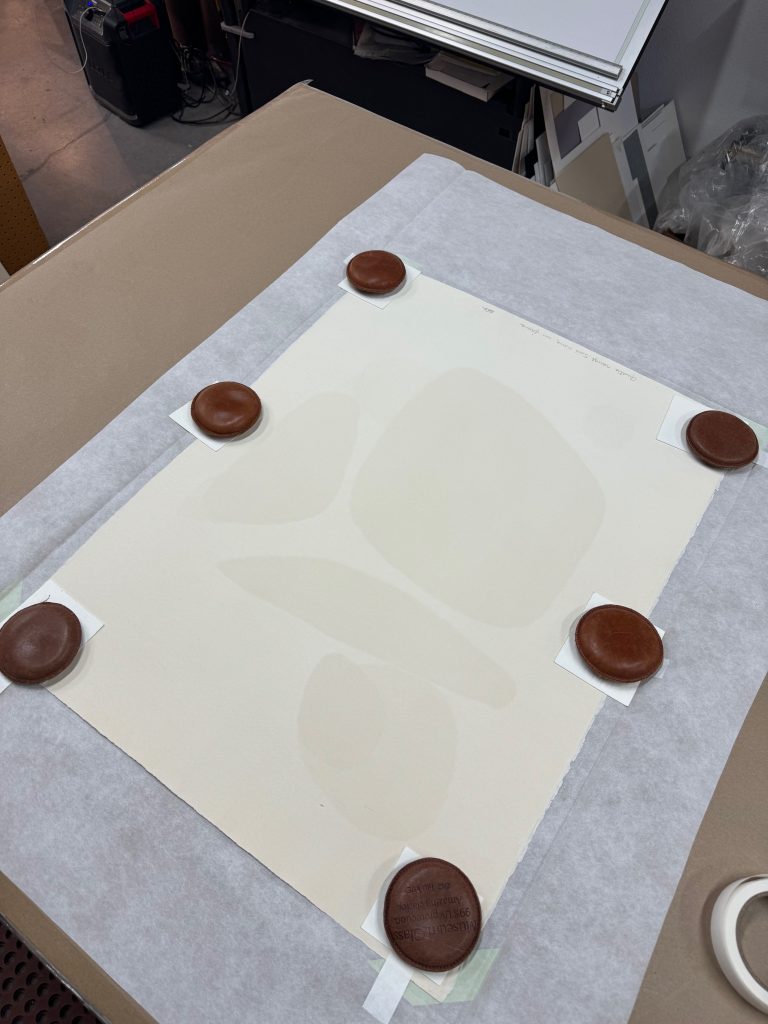
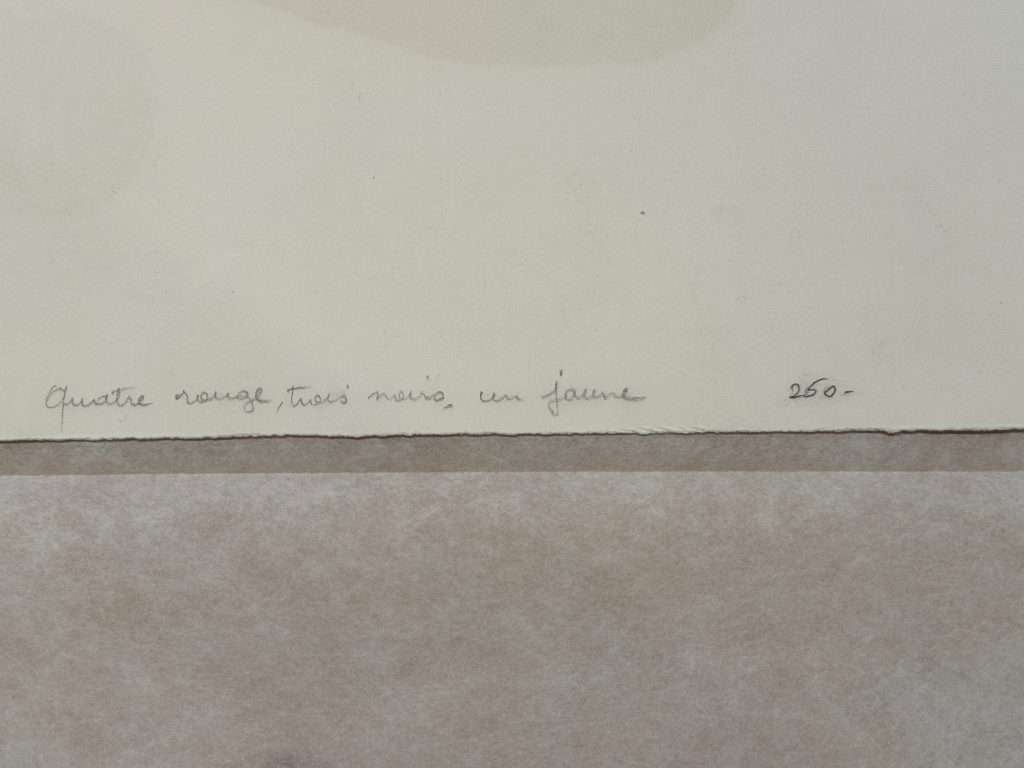
When our client returned to collect the artwork, it had been restored to its former glory, ready for its new frame. Together, we explored various options, ultimately deciding to pay homage to Calder’s sculptural legacy by “floating” and elevating the artwork, imparting a three-dimensional feel.
As we often say, “black is the new black.” For this project, we selected Crescent Rag mats, a sleek Larson Juhl black gallery frame, and Tru Vue Museum Glass to enhance the artwork’s presentation and protect it from UV damage.
During the reframing process, we made an intriguing discovery on the back of the piece—a handwritten notation that our client suspected might be the original purchase price, a charming glimpse into its history and provenance.
This project not only allowed us to honor Calder’s artistic vision but also deepened our appreciation for the stories and histories embedded within each artwork we encounter. Fun fact: Calder was a friend of Georgia O’Keefe and created her iconic “OK” pin that she wore for decades.
